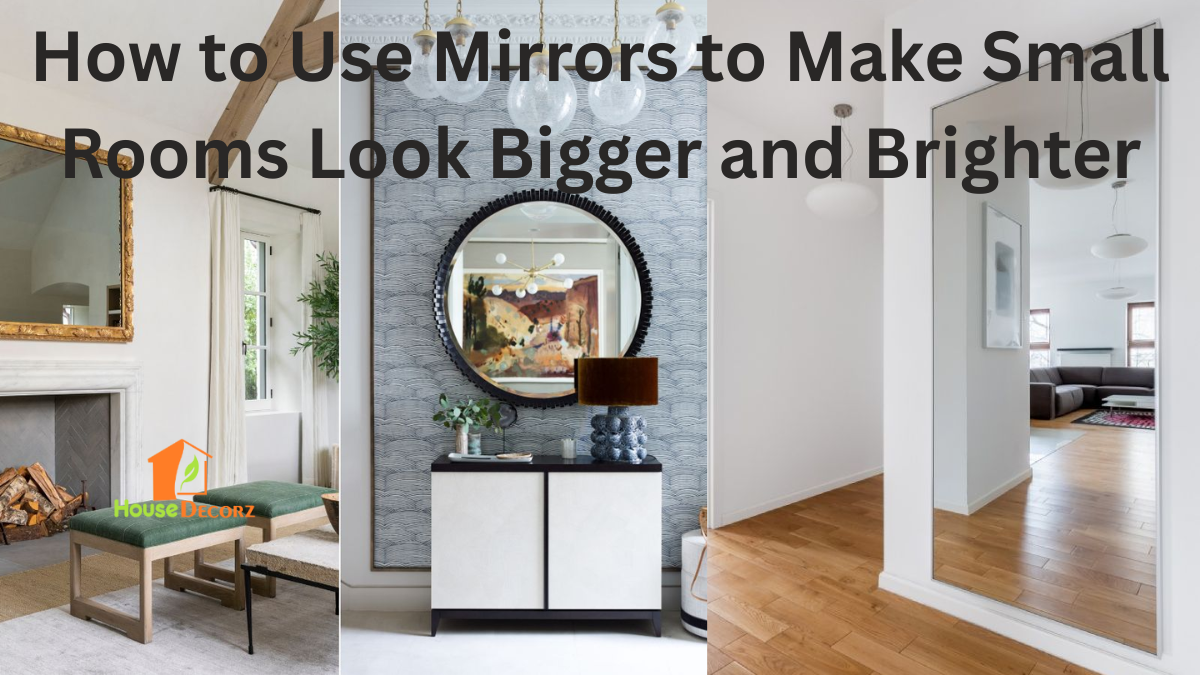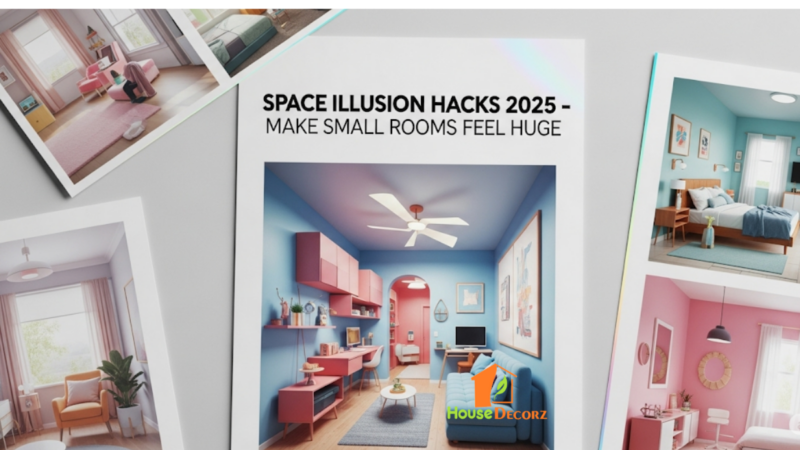How to Use Mirrors to Make Small Rooms Look Bigger and Brighter

Small rooms can sometimes feel cramped and dim, but the right decorative touches can completely transform the space. One of the most effective and timeless ways to enhance both the size and brightness of a small room is by incorporating mirrors.
Mirrors have long been favored by interior designers for their ability to reflect light and create the illusion of depth. In this article, we’ll explore clever strategies for using mirrors in small rooms along with expert mirror placement tricks and practical space enlarging ideas you can apply in your home.
Why Mirrors Work Wonders in Small Spaces
Mirrors are powerful visual tools. Their reflective surfaces bounce light around a room, making it appear larger and brighter. This happens because mirrors trick the eye by giving the impression of extended space and depth. Additionally, mirrors can highlight attractive elements like artwork, light fixtures, or outdoor views, further improving a room’s ambiance.
Whether you have a small bedroom, compact living room, or tiny entryway, a thoughtfully placed mirror can enhance the overall look and feel of your home without costly renovations.
Smart Mirror Placement Tricks for Maximum Impact
Strategic positioning is key when it comes to using mirrors in small rooms. Here are some smart placement ideas that can instantly elevate your space:
1. Opposite a Window
Placing a mirror directly across from a window doubles the amount of natural light in the room by reflecting it back into the space. This simple trick makes rooms feel airier and more open.
Example: Hang a large rectangular mirror across from a window in your living room to capture daylight and brighten the corners that sunlight doesn’t naturally reach.
2. Behind Furniture
Positioning a mirror behind furniture like a sofa, console table, or bed headboard can create the illusion of extended depth. It visually enlarges the area and adds an elegant touch to the decor.
Tip: Choose a wide horizontal mirror behind your dining table to make a narrow dining area feel more spacious.
3. In Hallways and Entryways
These often-overlooked areas benefit greatly from mirror placement. A long, vertical mirror can make a narrow hallway feel less confined while offering a functional space for quick outfit checks.
Bonus Idea: Use a gallery of small decorative mirrors arranged artistically to add interest and dimension to tight spaces.
Space Enlarging Ideas with Mirror Styles
The style of mirror you choose also plays a role in creating the desired spatial effect. Here are a few options to consider:
1. Floor-to-Ceiling Mirrors
Large mirrors that run from the floor to the ceiling create an uninterrupted reflective surface, making even the smallest rooms appear significantly taller and wider.
2. Framed Statement Mirrors
A bold, decorative frame can act as a statement piece while amplifying space. Opt for metallic or light-colored frames to enhance brightness.
3. Mirrored Furniture
Incorporating mirrored furniture such as side tables, cabinets, or dressers reflects light and surroundings subtly, preventing the room from feeling cluttered.
Combining Mirrors with Other Space-Enhancing Tricks
To maximize the effect of using mirrors in small rooms, combine them with other simple design strategies:
- Light, neutral wall colors reflect more light and make spaces feel open.
- Minimalist decor prevents the room from feeling crowded.
- Glass or acrylic furniture adds function without visual heaviness.
- Sheer window treatments allow more natural light in, boosting the mirror’s reflective benefits.
Example: A small studio apartment can feel twice its size by painting walls soft beige, using light linen curtains, placing a large mirror opposite a window, and keeping furniture to a minimum.
Recommendation
Top 7 Smart Mirror Ideas to Elevate Your Bathroom in 2025
How to Remove Bathroom Mirror?
How to Paint Tiles: A Step By Step Guide
The Ultimate Guide to Cleaning and Maintaining Tile and Grout
Final Thoughts
Mirrors are more than just practical accessories — they’re smart, stylish tools that can redefine how your space looks and feels. With thoughtful positioning and the right style choices, using mirrors in small rooms can effortlessly brighten your home, create the illusion of spaciousness, and enhance the room’s atmosphere. By incorporating these mirror placement tricks and pairing them with complementary space enlarging ideas, you can make any compact space look airy, open, and inviting without breaking the bank.
FAQs
Q1. Can using too many mirrors in a small room be overwhelming?
A: Yes, while mirrors help enlarge a space visually, overusing them can lead to visual clutter or confusing reflections. Aim for one or two strategically placed mirrors per room for the best effect.
Q2. Which rooms benefit most from mirror placement?
A: Small bedrooms, living rooms, hallways, bathrooms, and entryways benefit the most from well-placed mirrors, as these areas often lack natural light and space.
Q3. Are mirrored walls a good idea for small rooms?
A: Mirrored walls can make a dramatic statement and significantly enlarge a room visually. However, use them sparingly or on one wall to avoid overwhelming the space.
Q4. What kind of mirrors work best in tight hallways?
A: Tall, narrow mirrors or a collection of small, decorative mirrors arranged vertically can make a tight hallway appear longer and brighter.
Q5. How can I safely hang a large mirror in a small room?
A: Use heavy-duty wall anchors and secure hooks designed for the mirror’s weight. For extra stability in rental spaces, consider leaning large mirrors against a wall with anti-tip brackets attached.






